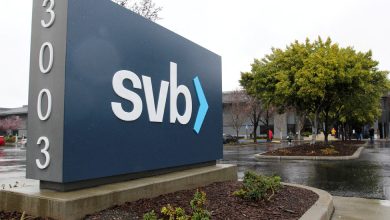The Rich Get College Subsidies While the Student Debt Debate Goes On

For months now, we’ve been in a nationwide debate over whether we should cancel up to $20,000 in student loan debt for tens of millions of people. Next year, the U.S. Supreme Court will weigh in on the hundreds of billions of dollars at stake — and talking heads will debate, yet again, who is deserving of help in America.
The student debt cancellation program excludes people with especially high incomes. But hiding in plain sight is another federal program — 529 college savings plans — that offers the biggest benefits to wealthy families.
With the right accounting and legal moves — ones that have never been subject to the kind of scrutiny that debt cancellation has faced — people with hundreds of thousands of dollars to spare can create 529 accounts that will end up holding millions of dollars. With some careful planning, no taxes will come due for most people as long as future generations use the money to pay for college (say, $84,000 a year at a private university like Duke), graduate school (hello, half-a-million-dollar New York University dental school) and any other related educational costs, including high-rise dorms and Apple laptops.
These maneuvers result in something that finance types have started referring to as “Dynasty” 529 plans. The accounts provide a marked contrast to the legacy of indebtedness that is emerging in families with fewer means. After all, it’s hard to save much in a 529 plan when you’re still paying off your own student loans as your children start college themselves. Then, those children borrow, too — and the parents may borrow even more to help pay the kids’ tuition.
To take a cleareyed view of who is getting what from the federal government in the realm of higher education, it helps to take a snapshot of how things work at this moment.
Slowly over time, we’ve decided that it is perfectly fine for two-thirds of college graduates to have borrowed tens of thousands of dollars along the way. “The choice we’re making is to shift the burden onto children,” said Victoria J. Haneman, a Creighton University law professor who has written about Dynasty 529 plans and the tax advantages they provide for the wealthy.
An elaborate governmental infrastructure has emerged to do the lending. In fact, most parents and graduate students can borrow whatever they want from the federal government, up to the full cost of attendance minus aid, no matter how little they earn. Schools like this, a lot.
Student loan repayment plans are numerous and confounding enough that the quasi-governmental bill collectors frequently give young adults bad advice about which plan to choose. Then, lawyers working at the behest of the federal government stick it to the destitute when they try to discharge student loan debt in bankruptcy court.
As a kind of apology for all of this, President Biden wants to lop up to $20,000 off the federal student loan balances of people who earn no more than $125,000 a year ($250,000 if you’re married). Eyebrows up at the break for this six-figure crew, certainly.
To beat back skepticism, the White House proposed to limit the $20,000 offer to people who started college with very little — those who, back when they were students, qualified for federal Pell Grants for people from low-income families. Everyone else would get up to $10,000 of relief.
The White House also noted that nearly one-third of the debtors now eligible for relief did not finish school and are burdened with the debt but not the degree that would probably have made loan payments more affordable. Overall, close to 90 percent of the deleted debt dollars were supposed to go to people earning less than $75,000 a year.
Most people with five-figure incomes have trouble saving a lot of money for college in 529 plans, which allow users to invest money in stock funds that can outrun tuition inflation over time. Tax breaks that come with the accounts — whether they are state income tax deductions for deposits or the avoidance of federal taxes upon withdrawal — are often more valuable to people with the highest incomes.
Now, enter those Dynasty 529 plans. Two years ago, an accountant and financial planner named Jeffrey Levine — beloved on tax Twitter for his lengthy, in-the-moment dissections of complicated legislation — wrote a kind of treatise on the topic on the website kitces.com.
In a somewhat bemused, can-you-believe-this-is-real tone that ran over 6,000 words, he outlined the possibilities. In short, wealthy individuals can front-load large 529 deposits in such a way that the accounts can pay for several college educations decades from now and still have money left over for other family members pursuing higher education in future generations. It’s all legal, and if you jump through a few modest hoops, it’s generally tax-free.
In fact, Mr. Levine spreadsheeted a jaw-dropping situation where two aspiring grandparents each invest $15,000 a year and let the money grow for 35 years. In that time, they could pay full tuition for four potential grandchildren, assuming a $30,000 annual bill today that would grow at a 5 percent annual rate.
Even after the generous grandparents did all of that, there would be over $3 million left over to let ride for future generations.
“My personal feeling is that it is absolutely insane,” said Mr. Levine, who is the chief planning officer at Buckingham Strategic Wealth. Nevertheless, he is a fiduciary sworn to act in every client’s best interest. That means telling the ones with the most money how to create wealth of the fantastic dynastic variety.
There ought to be a law, right? Funny you should ask. In 2015, President Obama proposed taxing future earnings in 529 accounts. The blowback from the upper middle class was so severe — and from Democrats and Republicans alike — that he rescinded the plan in the same month that he introduced it.
“I still think it’s the most ridiculous public policy episode I’ve been involved with, in my life,” said Jason Furman, who was chairman of President Obama’s Council of Economic Advisers at the time and is now a Harvard professor.
In reviewing this episode, we should be clear that we did not, as a nation, feel the need to call on The Supremes to weigh in on the legality of maintaining tax-favored savings for millions of people who could afford many college educations anyway. We just canceled the cancellation of their sweet, juicy subsidy without a vote in Congress or a trial. Trying again to limit 529 plans would be politically complicated, and courage is both lacking and impractical in Washington these days.
President Biden has done what he can — even if nine justices declare debt cancellation to be an overreach. He has made progress with improving various student loan programs and adjusting many rules.
But on a per-saver, per-student basis, it is the wealthy who have the best opportunity to extract the largest breaks from the federal government when it comes to saving and paying for college. We should ask, repeatedly, why this is so and live in the discomfort that comes from the realization that there are no good answers.




